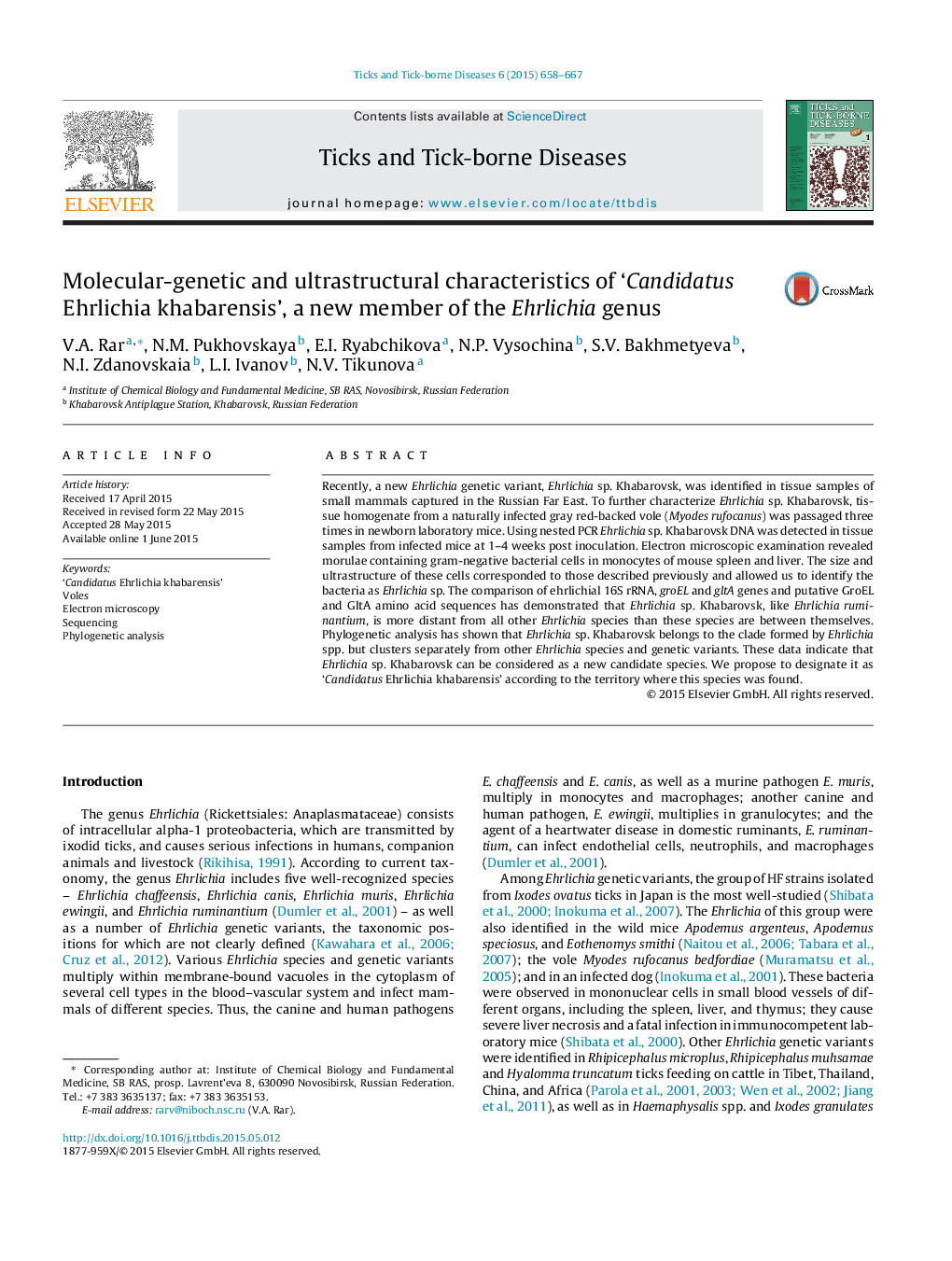| Article ID | Journal | Published Year | Pages | File Type |
|---|---|---|---|---|
| 5807267 | Ticks and Tick-borne Diseases | 2015 | 10 Pages |
Recently, a new Ehrlichia genetic variant, Ehrlichia sp. Khabarovsk, was identified in tissue samples of small mammals captured in the Russian Far East. To further characterize Ehrlichia sp. Khabarovsk, tissue homogenate from a naturally infected gray red-backed vole (Myodes rufocanus) was passaged three times in newborn laboratory mice. Using nested PCR Ehrlichia sp. Khabarovsk DNA was detected in tissue samples from infected mice at 1-4 weeks post inoculation. Electron microscopic examination revealed morulae containing gram-negative bacterial cells in monocytes of mouse spleen and liver. The size and ultrastructure of these cells corresponded to those described previously and allowed us to identify the bacteria as Ehrlichia sp. The comparison of ehrlichial 16S rRNA, groEL and gltA genes and putative GroEL and GltA amino acid sequences has demonstrated that Ehrlichia sp. Khabarovsk, like Ehrlichia ruminantium, is more distant from all other Ehrlichia species than these species are between themselves. Phylogenetic analysis has shown that Ehrlichia sp. Khabarovsk belongs to the clade formed by Ehrlichia spp. but clusters separately from other Ehrlichia species and genetic variants. These data indicate that Ehrlichia sp. Khabarovsk can be considered as a new candidate species. We propose to designate it as 'Candidatus Ehrlichia khabarensis' according to the territory where this species was found.
